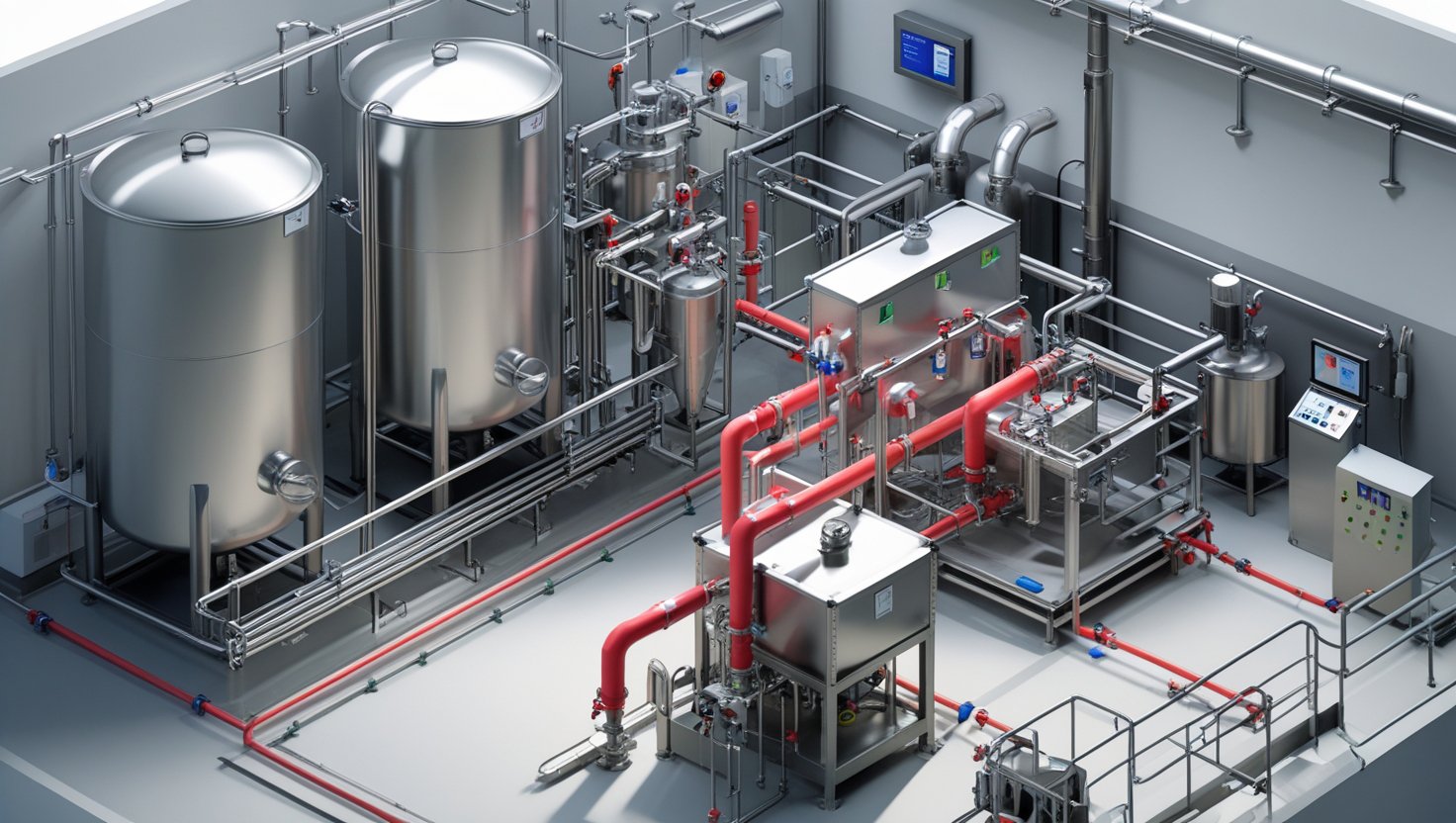
Ultrafiltration and Separator Integration: Process Optimization in Lactose-Reduced Milk Production
Introduction
Lactose intolerance is a digestive issue affecting a significant portion of the global population. As a result, the demand for lactose-reduced dairy products is increasing every day. Instead of traditional methods (such as enzymatic hydrolysis), modern membrane technologies like ultrafiltration (UF) and separator integration offer more efficient and cost-effective solutions.
In this article, we will explain, in simple and clear terms, the process optimization of using ultrafiltration and separators in lactose-reduced milk production.
1. What is Lactose-Reduced Milk?
Lactose is the natural sugar found in milk. Some people cannot digest lactose due to a deficiency of the lactase enzyme. Lactose-reduced milk is a product with a lowered lactose content.
Traditional Methods:
-
Enzymatic hydrolysis (adding lactase): Expensive and time-consuming.
-
Dilution: Reduces nutritional value.
Modern Methods:
✅ Ultrafiltration (UF): Physical separation of lactose and minerals.
✅ Separator Integration: Optimization of fat and protein fractions.
2. Lactose Separation with Ultrafiltration (UF)
Ultrafiltration uses membrane technology to separate milk components based on molecular size.
How Does It Work?
-
Milk is passed through UF membranes.
-
Protein and fat molecules (larger) are retained.
-
Lactose, minerals, and water (smaller) pass through as filtrate.
Advantages:
✔ High protein concentration (no nutrient loss).
✔ Lactose content can be reduced by 80-90%.
✔ No need for enzymes (cost advantage).
3. Process Optimization with Separator Integration
Separators use centrifugal force to separate milk components (fat, protein, lactose). When integrated with UF, process efficiency improves.
How the Integrated System Works:
-
Pre-separation (Separator):
-
Milk is separated into skim milk and cream.
-
-
Ultrafiltration:
-
Skim milk is ultrafiltered, producing a protein-rich retentate.
-
Lactose and minerals remain in the filtrate.
-
-
Standardization:
-
Protein and fat content are adjusted for nutritional balance.
-
Benefits:
🔹 More consistent product quality.
🔹 Precise control over lactose levels.
🔹 Energy and labor savings.
4. Critical Parameters for Process Optimization
For successful UF + separator integration, the following factors must be considered:
a) Membrane Selection
-
Molecular weight cutoff (MWCO): Ideal range is 10-50 kDa.
-
Membrane material: Polyethersulfone (PES) or ceramic membranes.
b) Separator Settings
-
Rotation speed: Between 6,000-10,000 rpm.
-
Temperature control: 50-55°C (prevents protein denaturation).
c) Recovery & Cleaning
-
CIP (Cleaning-in-Place): Regular cleaning to prevent membrane clogging.
-
Permeate recovery: Reuse of water and minerals.
5. Conclusion: Why UF + Separator Integration?
-
Lower enzyme costs.
-
High protein retention.
-
Adjustable lactose levels.
-
High efficiency at an industrial scale.
This method has revolutionized lactose-free milk production and is shaping the future of dairy technology.
Summary for Industry Newcomers:
🔸 Ultrafiltration = Filter milk, remove lactose.
🔸 Separator = Separate fat and protein.
🔸 Integration = More efficient, cheaper, higher-quality product!
Businesses that adopt this technology will gain a competitive edge and contribute to consumer health.


